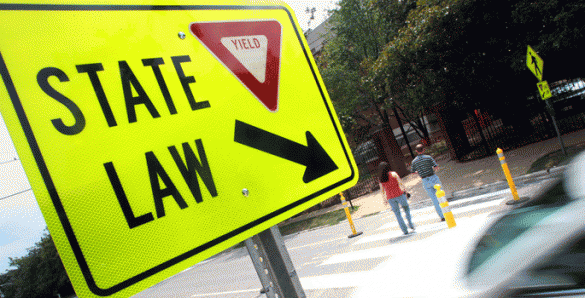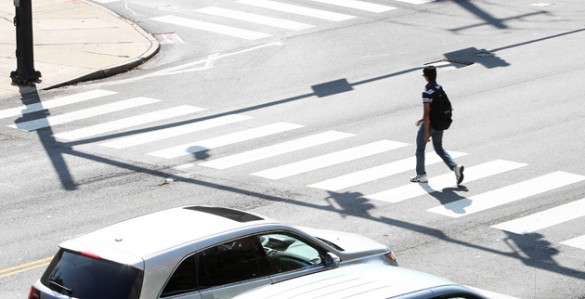
Despite new crosswalk signage installed around Nashville in 2014, Davidson County experienced a 20 percent increase in pedestrian fatalities over the year before, according to the Metropolitan Nashville Police Department. Already in 2015, two Nashville pedestrians lost their lives when they were struck by motor vehicles while crossing a roadway. Neither pedestrian was utilizing a crosswalk when they were struck.
Near Vanderbilt, it is not uncommon to see pedestrians darting through lanes of traffic on the busy thoroughfares that border campus. This seemingly innocuous activity is risky, and puts the lives of pedestrians as well as motorists in danger.
“During 2014, we had six pedestrian accidents on or near our campus, and we were fortunate that no one on our campus lost their life,” said Capt. Corey Thomas with the Vanderbilt University Police Department. “All could have been avoided if both drivers and pedestrians focus on being predictable, meaning drivers should follow the rules of the road and obey signs and signals, and pedestrians should use designated crosswalks or cross at intersections.”
Jaywalking—crossing mid-street rather than at an intersection or designated crosswalk—is a key contributor to pedestrian injuries and fatalities. In Nashville, 67 percent of pedestrians killed by motorists were not utilizing a crosswalk.
On the other side of the spectrum is that many Nashville motorists ignore crosswalk signage or simply don’t know what they are supposed to do. Some motorists come to a full stop at crosswalks, even when pedestrians are not present, while others zip right through, paying no heed to pedestrians in or near the crosswalk. Both of these behaviors are dangerous.

In fact, the rules for crosswalk observation are straightforward and simple to follow. Tennessee law requires that motorists yield (slow down or stop if necessary) when they can see that pedestrians are crossing or entering the crosswalk. In turn, pedestrians must do all they can to cross legally and safely, giving motorists sufficient time to reduce speed.
Last fall, Blair student Kelby Carlson, who is blind, was struck by a car when crossing Children’s Way. He suffered a fractured tibia and fibula, which required rod implants in his leg and weeks of downtime during recovery. This incident reinforces the notion that pedestrian safety is a team effort and we all must be vigilant.
“Our campus is located near two major thoroughfares for the city, West End Avenue and 21st Avenue South, and there are several large construction sites on or near our campus that can cause roadway changes and obstructed walkways,” Thomas said. “As the weather warms up, more of our students, staff and visitors will be outside walking, running or biking around our beautiful campus to and from their homes, local area shops, restaurants and Centennial Park. All of these things make it especially important for us to work together and remember the basics for sharing the roads and sidewalks in our community.”
Safety tips for pedestrians:
- Only cross at designated crosswalks.
- Wear bright colors by day and reflective clothing by night.
- Walk sober. Last year in Davidson County, 17 percent of pedestrians killed were impaired at the time of the crash.
- Look both ways before crossing, and when it is clear, walk, do not run.
- Never assume a driver sees you. Make eye contact with drivers as they approach.
- Don’t text or use mobile devices as you cross.
Safety tips for motorists:
- Always yield for pedestrians in the crosswalk.
- Be aware of your surroundings. If you are driving through a highly populated area, lower your speed and watch for sudden movements.
- Do not drive impaired.
- Don’t text or use mobile devices while driving.
- Stay within your lane of traffic, and be cautious when changing lanes.